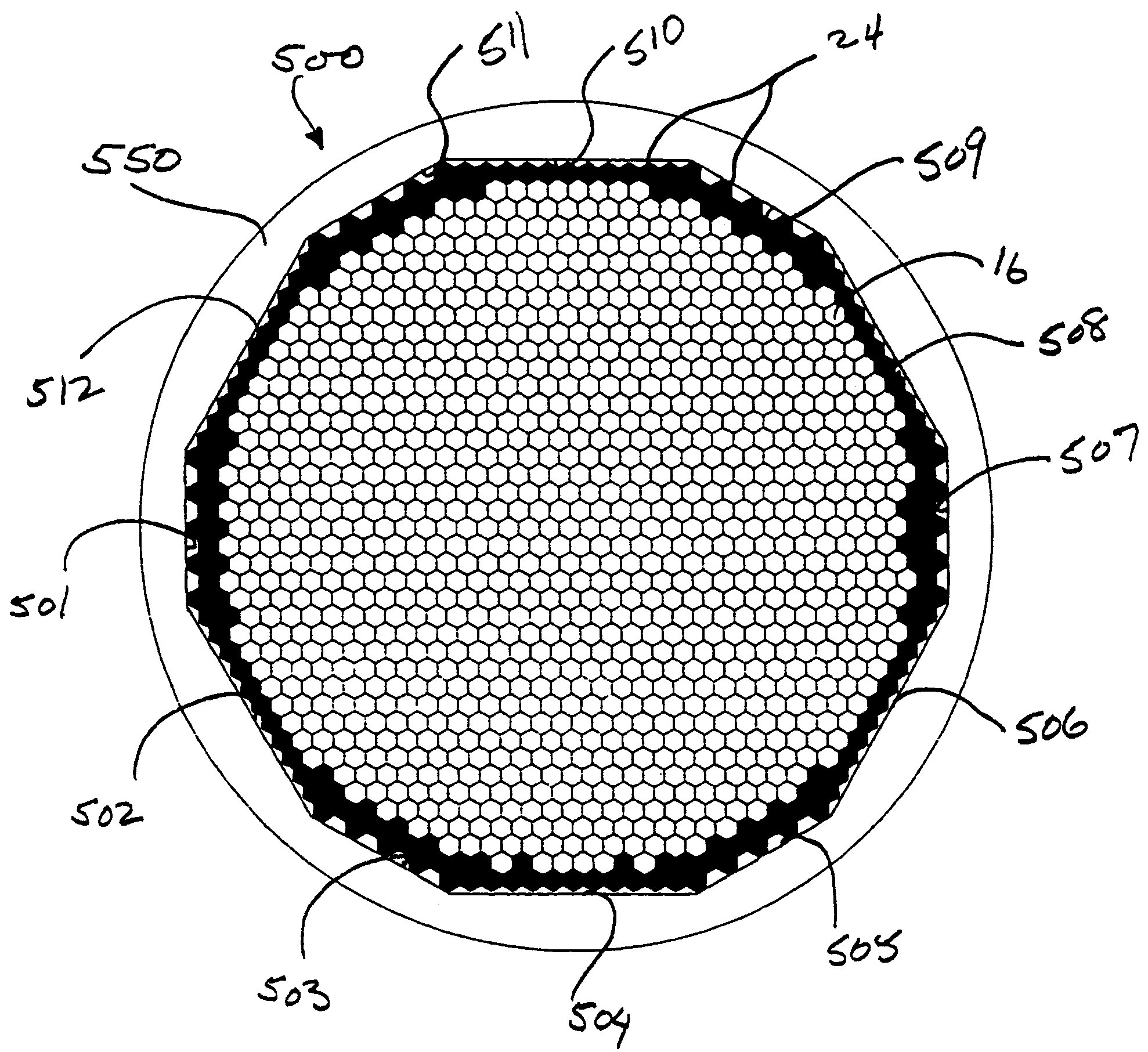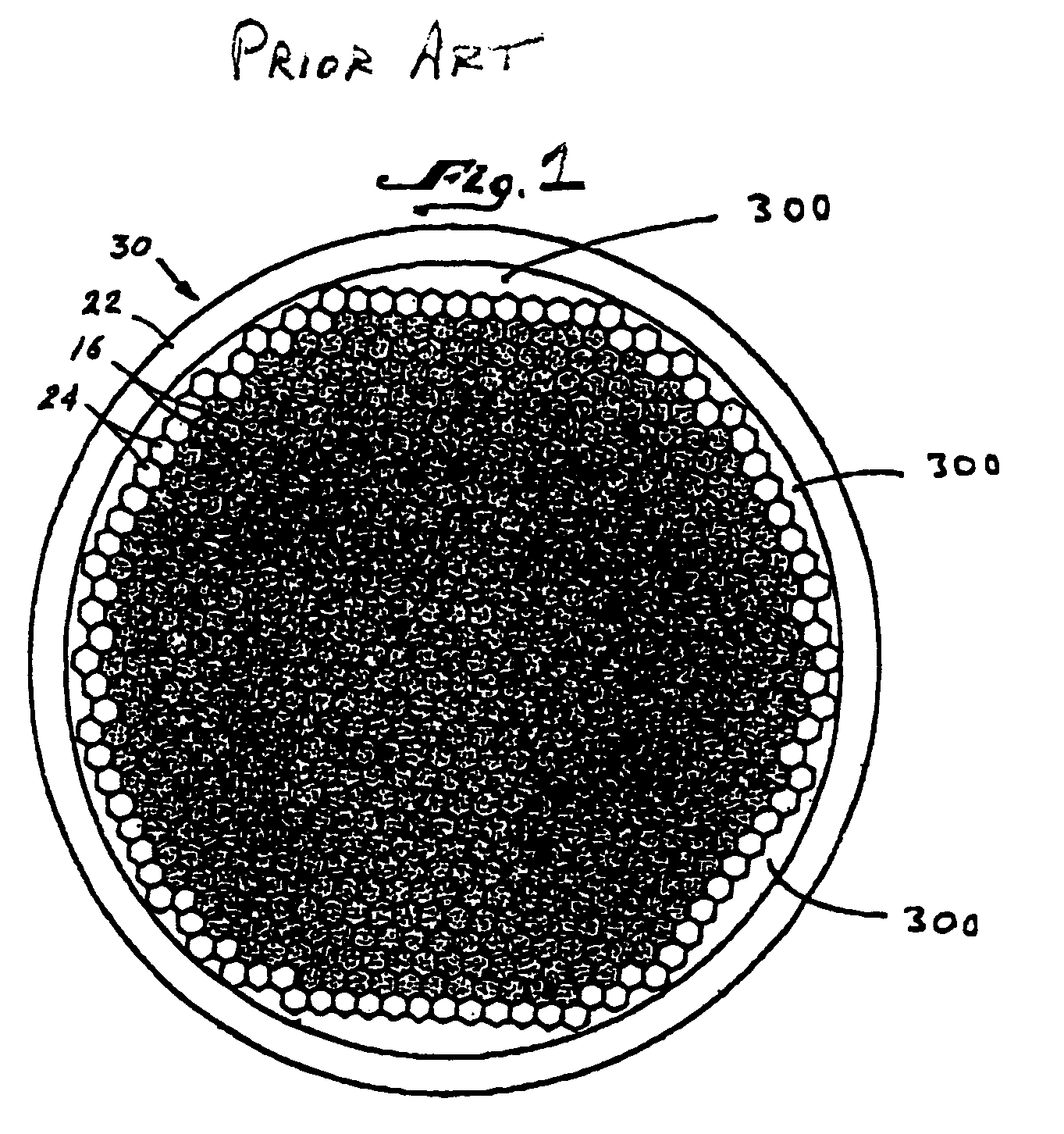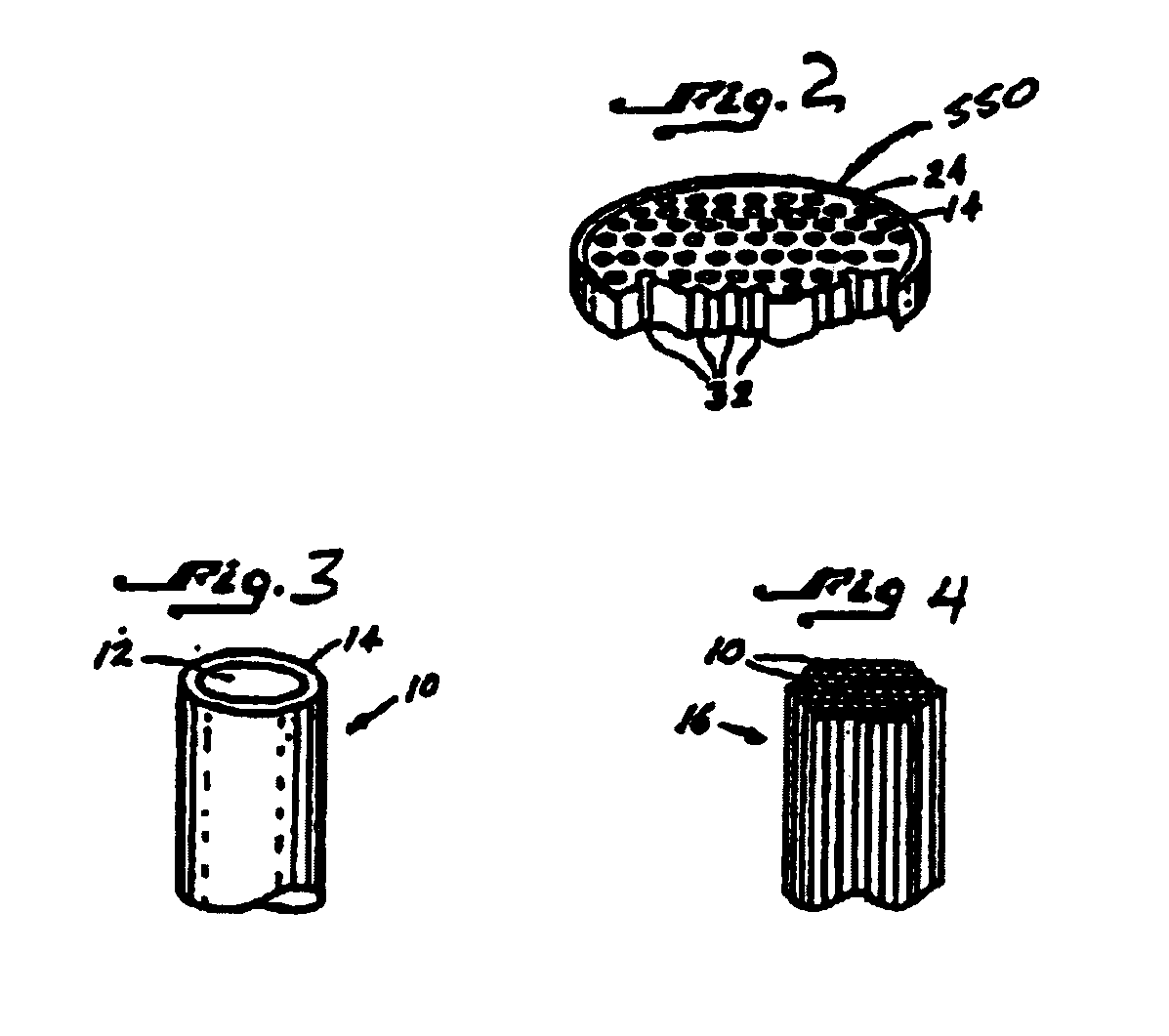Device and method for reducing glass flow during the manufacture of microchannel plates
a microchannel plate and glass flow technology, applied in the field of microchannel plates, can solve problems such as rupture, reduced structural integrity, and missing channel walls
- Summary
- Abstract
- Description
- Claims
- Application Information
AI Technical Summary
Problems solved by technology
Method used
Image
Examples
Embodiment Construction
[0014]The present invention relates to a glass packing tube 550 used to form boules and which tube is configured to reduce the amount of glass flow when fusing the boule during manufacture of microchannel plates. More specifically, the packing tube 550 according to the present invention is made of non-etchable glass and has multiple flat interior surfaces 501 through 512. These flat surfaces are planar surfaces and allow the packing of fiber bundles 16 and support rods 24 within the glass packing tube 550 while maintaining minimal open space (as compared to a round internal surface) between the outermost support rods and the interior surface of the packing tube. This minimization of open space is advantageous because it reduces the flow of glass during the fusion process that forms a fused boule.
[0015]FIG. 3 shows a starting fiber 10 used to manufacture a microchannel plate for use as an electron multiplier. The fiber 10 includes a glass core 12 and a glass cladding 14 surrounding t...
PUM
| Property | Measurement | Unit |
|---|---|---|
| width | aaaaa | aaaaa |
| dimension | aaaaa | aaaaa |
| shape | aaaaa | aaaaa |
Abstract
Description
Claims
Application Information
 Login to view more
Login to view more - R&D Engineer
- R&D Manager
- IP Professional
- Industry Leading Data Capabilities
- Powerful AI technology
- Patent DNA Extraction
Browse by: Latest US Patents, China's latest patents, Technical Efficacy Thesaurus, Application Domain, Technology Topic.
© 2024 PatSnap. All rights reserved.Legal|Privacy policy|Modern Slavery Act Transparency Statement|Sitemap



